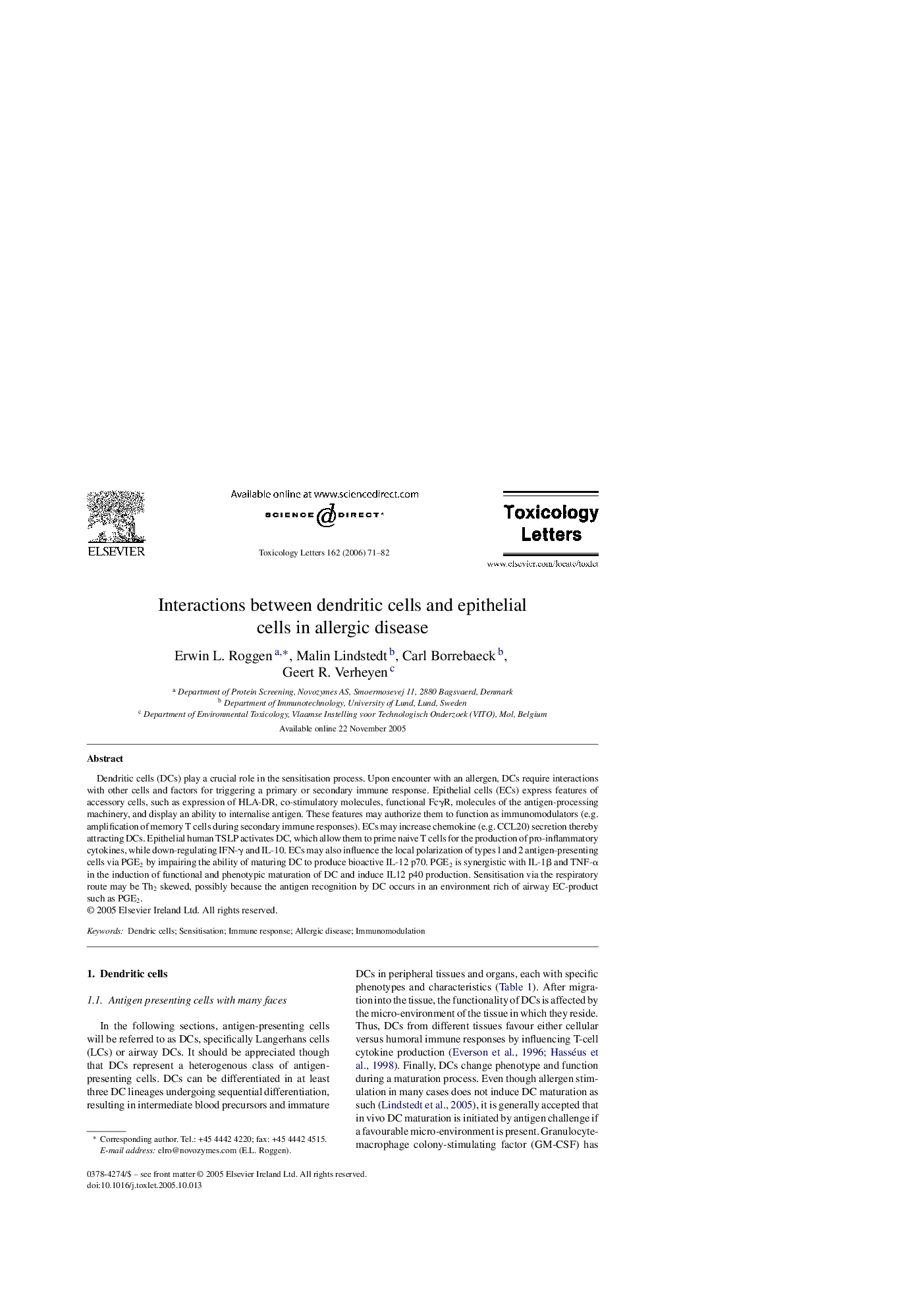| کد مقاله | کد نشریه | سال انتشار | مقاله انگلیسی | نسخه تمام متن |
|---|---|---|---|---|
| 2601395 | 1133317 | 2006 | 12 صفحه PDF | دانلود رایگان |

Dendritic cells (DCs) play a crucial role in the sensitisation process. Upon encounter with an allergen, DCs require interactions with other cells and factors for triggering a primary or secondary immune response. Epithelial cells (ECs) express features of accessory cells, such as expression of HLA-DR, co-stimulatory molecules, functional FcγR, molecules of the antigen-processing machinery, and display an ability to internalise antigen. These features may authorize them to function as immunomodulators (e.g. amplification of memory T cells during secondary immune responses). ECs may increase chemokine (e.g. CCL20) secretion thereby attracting DCs. Epithelial human TSLP activates DC, which allow them to prime naive T cells for the production of pro-inflammatory cytokines, while down-regulating IFN-γ and IL-10. ECs may also influence the local polarization of types l and 2 antigen-presenting cells via PGE2 by impairing the ability of maturing DC to produce bioactive IL-12 p70. PGE2 is synergistic with IL-1β and TNF-α in the induction of functional and phenotypic maturation of DC and induce IL12 p40 production. Sensitisation via the respiratory route may be Th2 skewed, possibly because the antigen recognition by DC occurs in an environment rich of airway EC-product such as PGE2.
Journal: Toxicology Letters - Volume 162, Issue 1, 15 March 2006, Pages 71–82